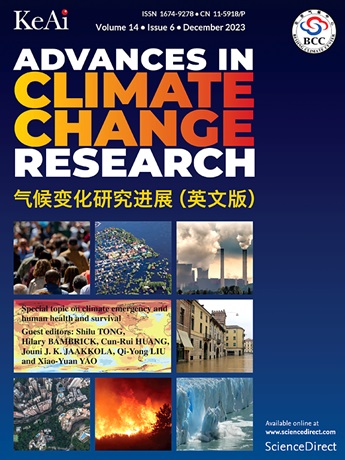Assessment of flood loss in administrative units based on improved vulnerability curves
IF 5.2
1区 地球科学
Q1 ENVIRONMENTAL SCIENCES
引用次数: 0
Abstract
The vulnerability curve is a key method for assessing flood loss risk, which contributes to the improvement of flood prevention and relief systems. However, existing vulnerability curves are typically developed on a large spatial scale, and intraregional variations in vulnerability are overlooked. This study aims to quantify the spatial heterogeneity of vulnerability within a region and elucidate the impact of vulnerability on flood losses. With Hubei and Hunan provinces in China as case study areas, vulnerability curves are constructed using a mixed-effects model. These curves are then combined with flood intensities across various return periods to estimate flood losses. In addition, the influence of vulnerability and flood intensity on flood losses is analyzed. The results indicate that the mixed-effects model is effective in constructing distinct vulnerability curves for smaller-scale administrative units (e.g. cities) while also assessing the overall vulnerability of the study area, and it achieves high accuracy (R2 > 0.75). The disparities in loss rates between cities increase under longer return periods. Furthermore, the variation in vulnerability between cities is the primary factor influencing flood losses for short return periods, whereas differences in hazard intensity have a greater impact on city flood losses during longer return periods. This study provides methods and recommendations for systematic flood risk reduction and proposes pathways for enhancing climate resilience.
基于改进脆弱性曲线的行政区划洪水损失评估
易损性曲线是评估洪水损失风险的重要方法,有助于完善防洪减灾体系。然而,现有的脆弱性曲线通常是在大的空间尺度上发展的,忽视了脆弱性的区域内变化。本研究旨在量化区域内脆弱性的空间异质性,阐明脆弱性对洪水损失的影响。以湖北省和湖南省为例,采用混合效应模型构建脆弱性曲线。然后将这些曲线与不同回归期的洪水强度相结合,以估计洪水损失。此外,还分析了脆弱性和洪水强度对洪水损失的影响。结果表明,混合效应模型在构建城市等小型行政单元的不同脆弱性曲线的同时,也能有效地评估研究区域的整体脆弱性,且具有较高的准确性(R2 >;0.75)。回归期越长,城市间的损失率差异越大。城市间脆弱性差异是影响短重现期洪水损失的主要因素,而灾害强度差异对长重现期城市洪水损失的影响更大。本研究为系统降低洪水风险提供了方法和建议,并提出了增强气候适应能力的途径。
本文章由计算机程序翻译,如有差异,请以英文原文为准。
求助全文
约1分钟内获得全文
求助全文
来源期刊

Advances in Climate Change Research
Earth and Planetary Sciences-Atmospheric Science
CiteScore
9.80
自引率
4.10%
发文量
424
审稿时长
107 days
期刊介绍:
Advances in Climate Change Research publishes scientific research and analyses on climate change and the interactions of climate change with society. This journal encompasses basic science and economic, social, and policy research, including studies on mitigation and adaptation to climate change.
Advances in Climate Change Research attempts to promote research in climate change and provide an impetus for the application of research achievements in numerous aspects, such as socioeconomic sustainable development, responses to the adaptation and mitigation of climate change, diplomatic negotiations of climate and environment policies, and the protection and exploitation of natural resources.
 求助内容:
求助内容: 应助结果提醒方式:
应助结果提醒方式:


